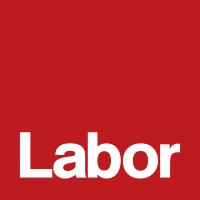The Minns Labor Government is backing innovative and practical solutions to homelessness and the housing crisis with more than $16.6 million allocated under the NSW Government’s new Homelessness Innovation Fund including investments for Macquarie Fields.
The Macquarie Fields electorate will see increased support for the most vulnerable thanks to a grant of $446,450 to Women’s Community Shelters for the establishment of a proven meanwhile use housing and support model that will provide transitional semi-self-contained accommodation for older women with lower support needs who are homeless.
Announced at the 2024/25 NSW Budget, the Homelessness Innovation Fund is providing short, sharp support for partner organisations who are bringing good ideas to the table and have a strong track record of supporting people facing homelessness.
In less than a year, the game-changing program has already provided funding for 42 innovative projects, adding 504 additional beds for rough sleepers in New South Wales.
Of the more than 40 successful projects so far, eight are either Aboriginal-led or providing targeted support for Aboriginal people, ten are designed to support victim-survivors of domestic and family violence and six are specifically for women at risk of homelessness.
These latest investments are timely with the 2025 Street Count data revealing an 8 per cent uptick in rough sleepers across New South Wales.
The Homelessness Innovation Fund is a core part of the historic $6.6 billion Building Homes for NSW program, the state’s largest ever investment in public housing and homelessness services.
More than $80 million remains available over the next three years and we encourage accredited housing providers and homelessness services to apply.
For more information about the Fund, go to: https://dcj.nsw.gov.au/housing/homelessness-innovation-fund.html
Member for Macquarie Fields Anoulack Chanthivong MP said:
“It’s fantastic to see this NSW Government support delivered to bring about improved homelessness services for the Macquarie Fields electorate.
“With increases in the number of people sleeping rough across our state, we’re making sure community housing providers are getting more support to drive innovation and reform and ensure more people have a safe roof over their heads at one of the most difficult times in their lives.”
Minister for Housing and Homelessness Rose Jackson said:
“I am so proud of what we’ve achieved in just the past 10 months with the game-changing Homelessness Innovation Fund which was created in direct response to the calls from the sector as well as people with lived experience of homelessness.
“We heard the calls for action to meet critical gaps in services and address rampant issues with hotel and motels being used for temporary accommodation.
“Many of the projects which have received funding so far have already transformed outcomes for vulnerable people in our communities and there are so many more benefits to come as we continue roll out this program.”
Chief Executive Officer Women’s Community Shelters Annabelle Daniel OAM said:
“We are proud to be opening a safe haven for older women escaping the cycle of domestic and family violence and homelessness.
“It takes a village to bring new projects like this to life, and we are proud to be working closely with our project partners Housing All Australians (HAA), Hume Housing, Whiddon, Temple & Webster, Urban Property and the local Glenfield community.
“We thank the NSW Government for embracing our ‘meanwhile use’ housing model as a pragmatic and immediate response to NSW’ housing crisis, and we look forward to opening more of these life-changing homes for older women.”
Chris Mamarelis, CEO, Whiddon says:
“Whiddon is proud to be part of this transformative initiative that provides safe, transitional housing for older women in our community.
“As a not-for-profit aged care provider, we are also opening pathways to training and employment. This is part of our ongoing commitment to Collaborative Health initiatives which demonstrate what can be achieved by partnering across Government, providers, and community groups.”


